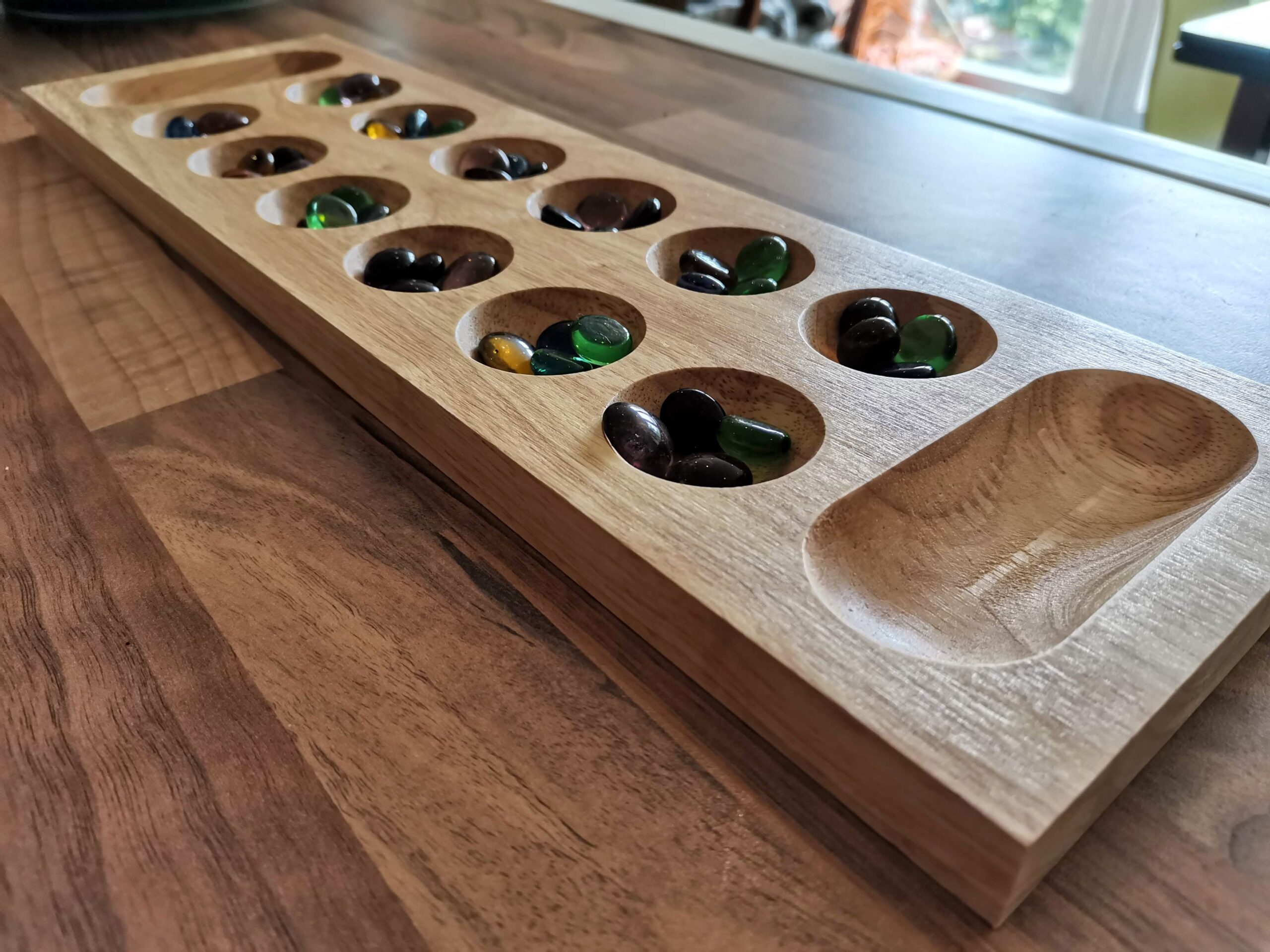Hadrian’s Wall Review
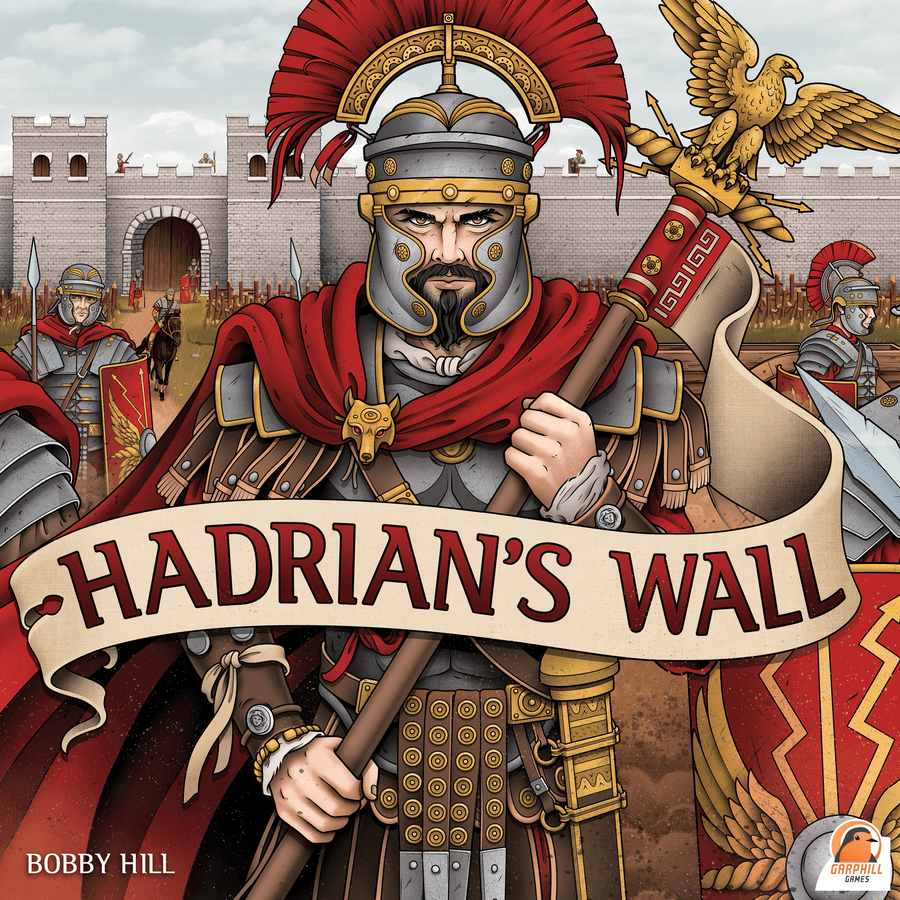
Garphill Games’ first big release for 2021 is here, and it’s a flip-and-write game. The roll/flip-and-write genre has traditionally been fairly light in terms of complexity, and the games are usually expected to be filler material – good for a quick play but not the sort of thing to bring people to the table for. We expect them to be light, because most of the something-and-write games are light, so it’s great to see a well-known publisher break the status quo and show what’s possible.
In Hadrian’s Wall, you are a Roman general, tasked with building a section of the eponymous structure which marked the boundary between what was Roman Britannia (England), and Caledonia (Scotland) in the north. Over six rounds, you’re going to construct walls and defences against the Pict invasions, entice citizens with baths, theatres and temples, and increase your renown, piety, valour and discipline, while trying to avoid disdain. Or you’ll try to, at least. The way you do this is using the various people and resources at your disposal each round and assigning them to tasks, reaping benefits along the way.

I appreciate the fact that the rule book’s foreword acknowledges slavery. At the point in history that the game is set, slave labour made-up up to a third of the Roman Empire’s workforce, so to ignore it would have been insensitive. The history is acknowledged, the terminology rephrased to call those pieces ‘servants’, and it’s enough. The actions and game are so far abstracted from real life that it doesn’t feel like an issue for me.
Tick-box culture
Instead of a game board and player boards on the table, as in most games, Hadrian’s Wall sees the players tearing a couple of sheets off the huge pads included in the box. Armed with a pen, pencil, or your favourite blunt crayon, whenever you take an action you fill in a box on one of the sheets. If you cross out a symbol in a box, you get the thing that symbol represents as a bonus. That bonus could be another person to use, a step up one of the various tracks, or even favour, which can be used to help when the Picts invade. Where the game gets really juicy though, is when these actions combo up and give you more and more things.
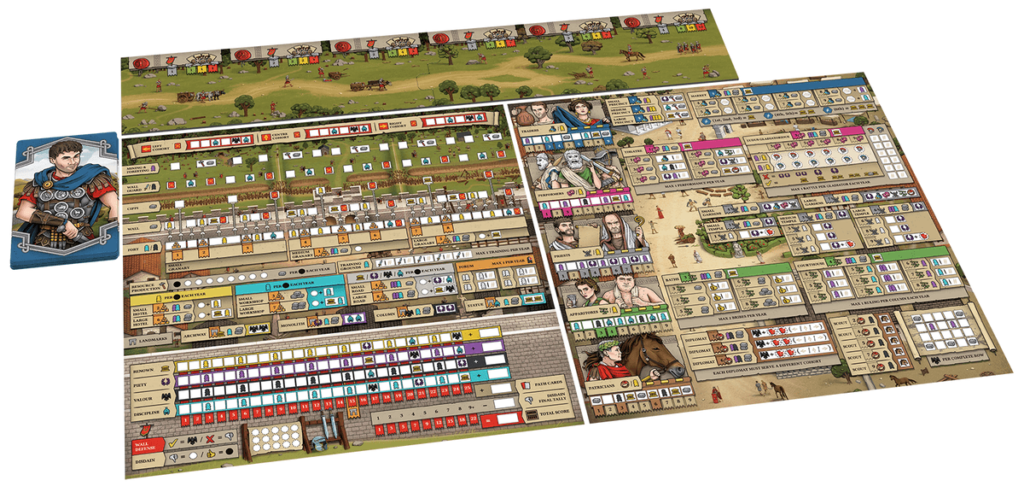
Anyone who’s played a good roll-and-write, like Ganz Schon Clever for example, knows how rewarding that dopamine-releasing feedback loop feels. It feels disproportionately satisfying to cross out a box just because you crossed out a different box. Trust me, when you scribble out a box that ends up seeing you tick another three boxes and grab another tiny wooden meeple, you might as well have just found a tenner in your trouser pocket.
It’s a good job it’s such a satisfying exercise, because when you first lay down the two sheets in front of someone, to call it daunting would be an understatement. Everyone has the same “Woah…” reaction. When I said there are boxes to tick, I meant, there are a LOT of boxes to tick. In the interests of public service, I’ve just counted all the little boxes and circles on the sheets, and I make it 412. That’s a lot of boxes. So you sit there, stunned, looking at two big sheets of paper with hundreds of boxes, and you’ve got no idea where to start. Fear not, reader, because things are not as complicated as they seem.
Just start playing
That’s my advice to anyone playing Hadrian’s Wall for the first time – just start playing. The rule book is fantastic, and follows a great logical order. You’re instructed to lay one sheet on the left, the other on the right, and each of the different sections on the sheets has its own section in the rulebook. Those sections are clear, concise, and give specific examples for each one, and they’re in logical order.
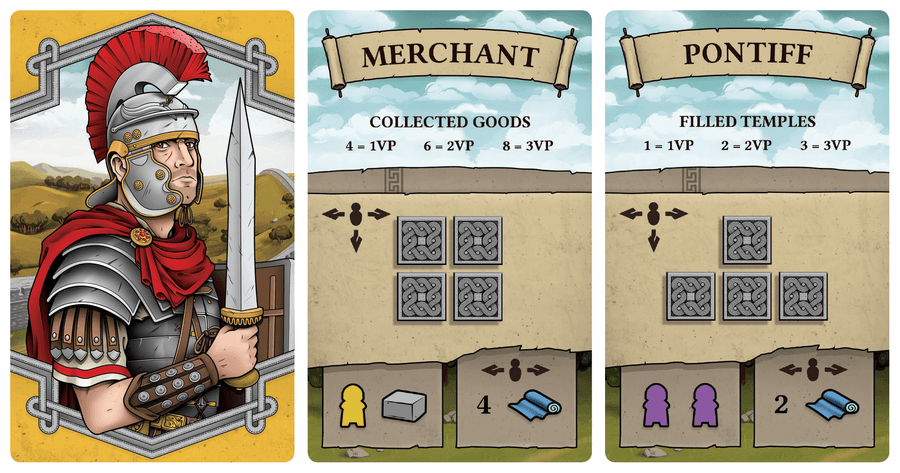
If you want the rules for forestry and mining (top of the left sheet), they’re near the front of the book. If you want to find out how to Scout (bottom of the right sheet), it’s at the back of the book. I wouldn’t normally talk about the rules as much as this, but in a game which initially looks impenetrable, it’s important to understand how easy it is to learn to play Hadrian’s Wall.
Once you start ticking boxes and seeing how the various tracks interact, it’s a game that you’ll pick-up very quickly, and at the same time you’ll start to see just how much fun it is. Hadrian’s Wall is awesome. I’m addicted. For every review I write there’s a (secret!) minimum number of times that I play each game, and let’s just say that my play count for this one is far in excess of that number.
Building a landmark
Hadrian’s Wall is a landmark game for me. It’s the first time I’ve played a flip-and-write that feels like a full-on game, and it’s a fantastic game too. Fleet: The Dice Game is a great roll-and-write game, but it doesn’t quite bridge the gap between filler and feature in the same way as Hadrian’s Wall does . It feels like a big Euro game in the Garphill Games universe, because it is a big Euro game, and because Shem Phillips saw a natural fit between Bobby Hill’s design and his own games’ settings. The only difference is it just uses paper and pens instead of cardboard and wood for the main game.
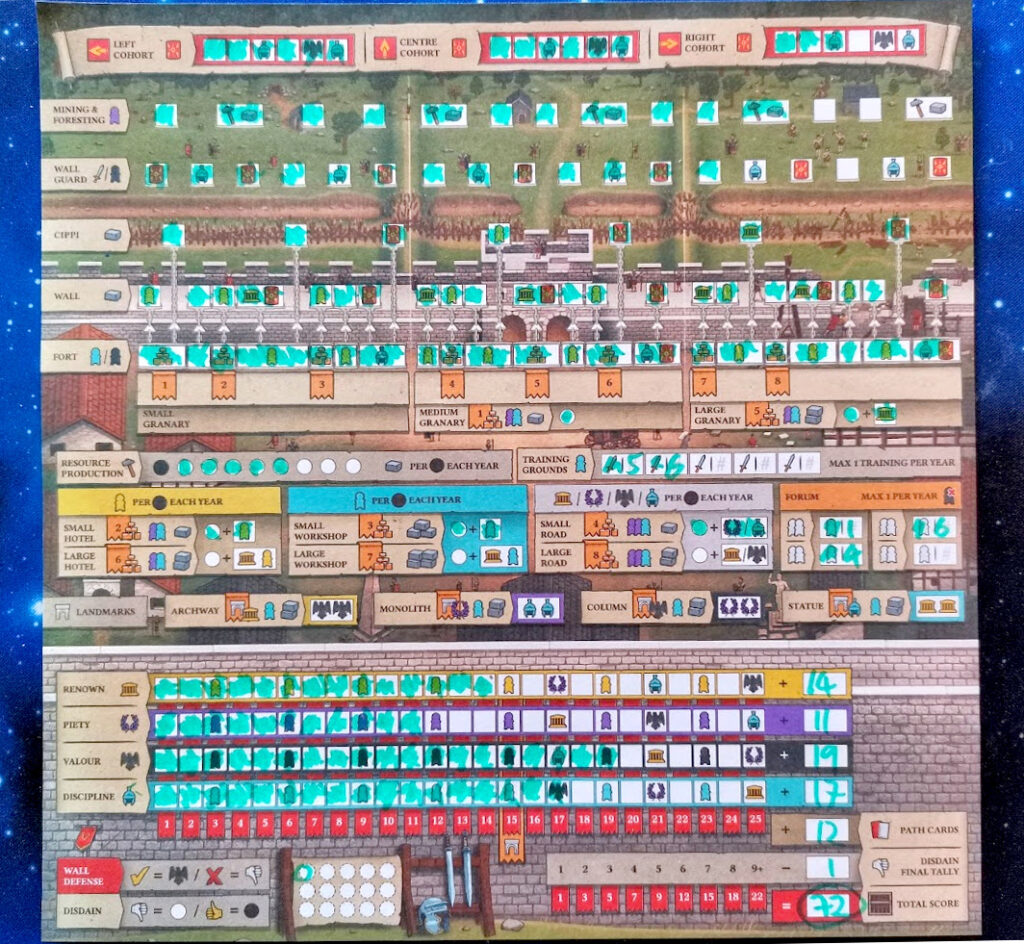
It’s important to understand that this game could have been made a couple of different ways. The pads of sheets could have been a few player boards, and each step on each track could have been a wooden cube on a square, but they aren’t, and I’m so glad that’s the case.
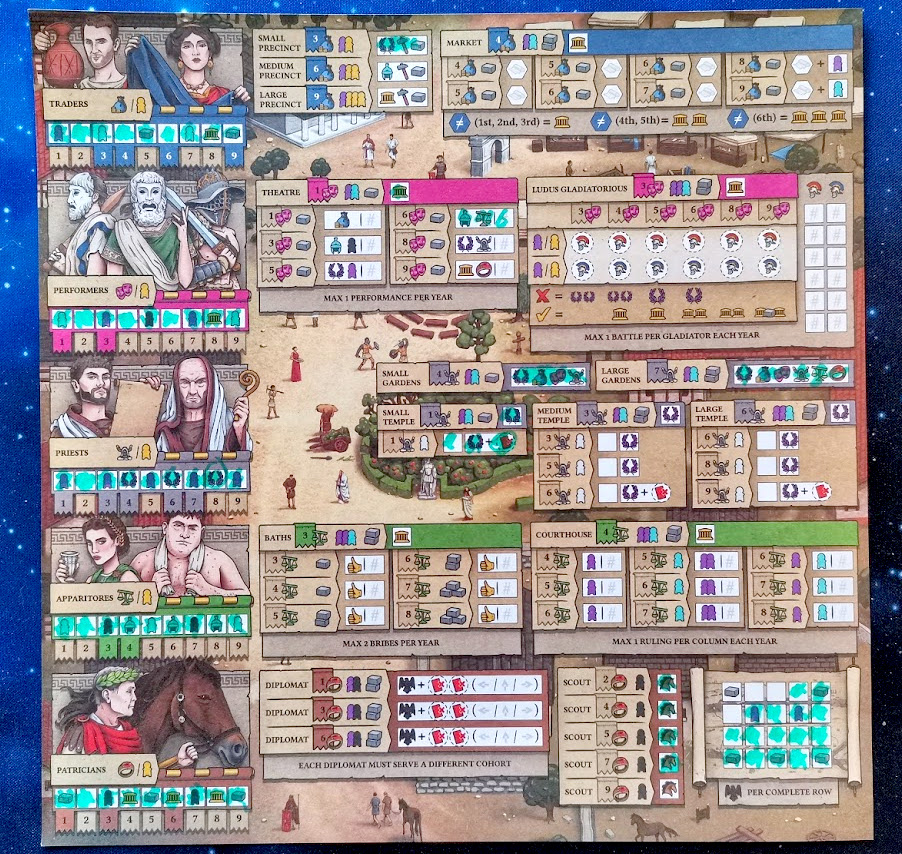
Scribbling on the sheets and filling in boxes is a tangible, personal thing. It feels good to colour in the boxes. By using pens and paper, the setup and tear-down time is tiny, and that’s something I appreciate more and more these days. As a dad and full-time employee, my free time is really precious to me. I can get Hadrian’s Wall setup in a couple of minutes and play a deep, thinky, satisfying game in half an hour. That’s amazing to me, and one of the reasons I keep coming back to it.
Final Thoughts
Hadrian’s Wall doesn’t feel solvable. There is too much to do in any one game, and too much variance in the setup and goals – which are card-driven – to make it possible to solve. This is huge for me. Ganz Schon Clever is great, but when I realised how to ‘solve’ it (or at least score 300+ each game), it really killed it as a game for me. I’ve chatted to lots of different people about strategy for Hadrian’s Wall, including folks at Garphill, and everyone has their own strategy, and they all work to some extent. This makes me very happy, because it means I know I will get a good way through the 100 pages per sheet and not have the game solved.
Hadrian’s Wall is not a game for someone looking for a light flip-and-write. This is way deeper than the likes of Silver & Gold or Metro-X, and that’s why I have absolutely no hesitation in recommending it to anyone who enjoys medium-weight games, and upwards. There’s a ridiculous amount going on, but it’s all tied together cohesively, and it’s so, so satisfying, in every aspect. From the combination of scribbling in box after box, to the tension of revealing the invasion cards at the end of the round and seeing if your defences stand up, it’s just brilliant. Please, don’t judge the game by looking at the pages of boxes. Play it once, just once, and I’m sure you’ll enjoy it just as much as I do.
Hadrian’s Wall is my favourite game of 2021. I know there’s still two-thirds of the year still to go, but it’s drawn a line in the sand for me, and other games are going to have to go some to top it.
Review copy kindly provided by Garphill Games. Thoughts and opinions are my own.

Hadrian’s Wall (2021)
Designer: Bobby Hill
Publisher: Garphill Games
Art: Sam Phillips
Players: 1-6
Playing time: 30-45 minutes







